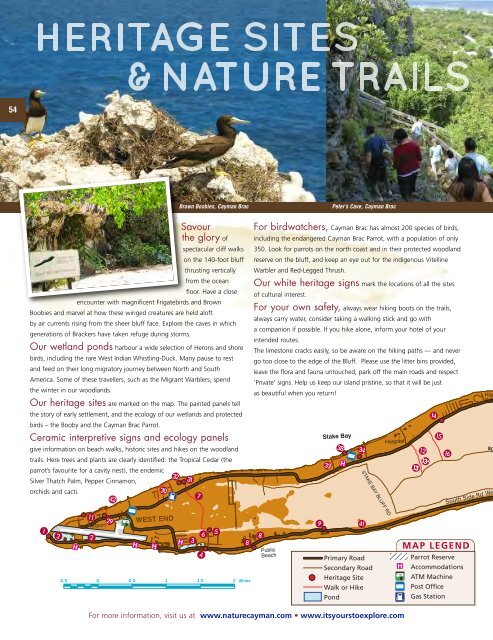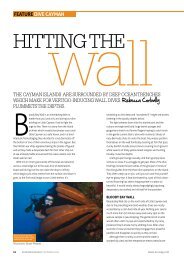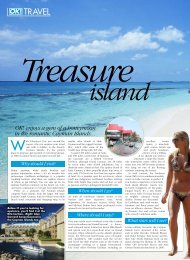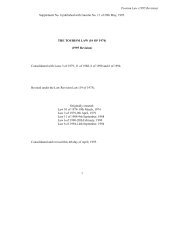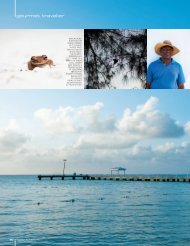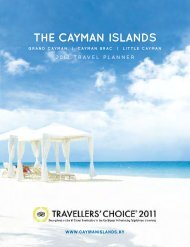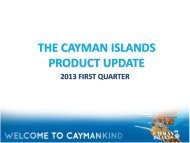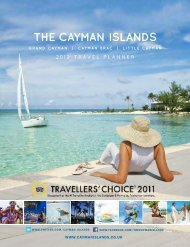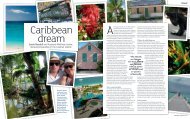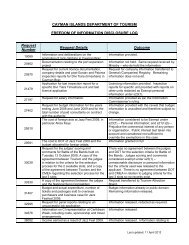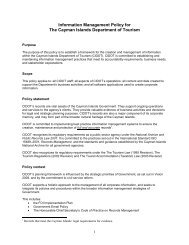60-68-CAYMAN BRAC-V7 - Cayman Islands
60-68-CAYMAN BRAC-V7 - Cayman Islands
60-68-CAYMAN BRAC-V7 - Cayman Islands
You also want an ePaper? Increase the reach of your titles
YUMPU automatically turns print PDFs into web optimized ePapers that Google loves.
100<br />
54<br />
Brown Boobies, <strong>Cayman</strong> Brac<br />
Peter’s Cave, <strong>Cayman</strong> Brac<br />
Savour<br />
the glory of<br />
spectacular cliff walks<br />
on the 140-foot bluff<br />
thrusting vertically<br />
from the ocean<br />
floor. Have a close<br />
encounter with magnificent Frigatebirds and Brown<br />
Boobies and marvel at how these winged creatures are held aloft<br />
by air currents rising from the sheer bluff face. Explore the caves in which<br />
generations of Brackers have taken refuge during storms.<br />
Our wetland ponds harbour a wide selection of Herons and shore<br />
birds, including the rare West Indian Whistling-Duck. Many pause to rest<br />
and feed on their long migratory journey between North and South<br />
America. Some of these travellers, such as the Migrant Warblers, spend<br />
the winter in our woodlands.<br />
Our heritage sites are marked on the map. The painted panels tell<br />
the story of early settlement, and the ecology of our wetlands and protected<br />
birds – the Booby and the <strong>Cayman</strong> Brac Parrot.<br />
Ceramic interpretive signs and ecology panels<br />
give information on beach walks, historic sites and hikes on the woodland<br />
trails. Here trees and plants are clearly identified: the Tropical Cedar (the<br />
parrot’s favourite for a cavity nest), the endemic<br />
Silver Thatch Palm, Pepper Cinnamon,<br />
orchids and cacti.<br />
For birdwatchers, <strong>Cayman</strong> Brac has almost 200 species of birds,<br />
including the endangered <strong>Cayman</strong> Brac Parrot, with a population of only<br />
350. Look for parrots on the north coast and in their protected woodland<br />
reserve on the bluff, and keep an eye out for the indigenous Vitelline<br />
Warbler and Red-Legged Thrush.<br />
Our white heritage signs mark the locations of all the sites<br />
of cultural interest.<br />
For your own safety, always wear hiking boots on the trails,<br />
always carry water, consider taking a walking stick and go with<br />
a companion if possible. If you hike alone, inform your hotel of your<br />
intended routes.<br />
The limestone cracks easily, so be aware on the hiking paths — and never<br />
go too close to the edge of the Bluff. Please use the litter bins provided,<br />
leave the flora and fauna untouched, park off the main roads and respect<br />
’Private’ signs. Help us keep our island pristine, so that it will be just<br />
as beautiful when you return!<br />
We<br />
For more information, visit us at www.naturecayman.com • www.itsyourstoexplore.com


